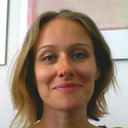Identification of garlic in old gildings by gas chromatography-mass spectrometry.
Nøgleord
Abstrakt
The proteinaceous content of garlic (Allium sativum) was characterised according to its amino acid composition by using a gas chromatography-mass spectrometry (GC-MS) analytical procedure. The procedure was tested on fresh and aged garlic samples as well as on reference gilding specimens prepared according to old recipes. The proteinaceous pattern showed a characteristic distribution of amino acids with glutamic acid being the major component. The average amino acidic composition was: glutamic acid (Glu; 29%), aspartic acid (Asp; 17%), serine (Ser; 11%), alanine, glycine, valine, leucine, lysine and phenylalanine (Ala, Gly, Val, Leu, Lys and Phe; 5-6%), isoleucine, proline and tyrosine (Ile, Pro and Tyr; 2-3%), methionine and hydroxyproline (Met and Hyp; 0.5%). In order to distinguish this material from animal glue and egg, which are the other proteinaceous media commonly used in gilding techniques, a database of amino acid percentages of the three proteins was built up and submitted to principal component analysis. Three separate clusters were obtained, allowing the protein identification. The application of the procedure on several gilding samples from Italian wall and easel paintings (13th-17th century) permitted to evidence the use of garlic as a gluing agent.


